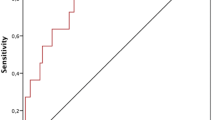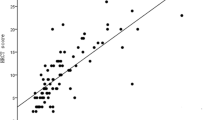Abstract
The objective of this study was to determine the role of serum KL-6 levels as a marker for the activity of interstitial pneumonia in patients with connective tissue diseases. The serum concentrations of KL-6, a glycoprotein produced mainly by pulmonary type II epithelial cells, were measured in 21 patients with connective tissue disease. The activity of interstitial pneumonia was compared with the associated serum KL-6 concentrations. Serum KL-6 concentrations in patients with interstitial pneumonia were significantly higher than those in the controls. Among patients with active interstitial pneumonia, serum KL-6 concentrations following the treatment (after improvement) were significantly lower than the pretreatment values. The extent of the pulmonary fibrosis correlated positively with the serum KL-6 concentrations during the inactive phase of the interstitial pneumonia. These results suggest that sequential measurement of serum KL-6 levels is a new and useful means for the evaluation of interstitial pneumonia in patients with connective tissue diseases.
Similar content being viewed by others
Author information
Authors and Affiliations
Additional information
Received: 10 January 2000 / Accepted: 20 March 2000
Rights and permissions
About this article
Cite this article
Fukaya, S., Oshima, H., Kato, K. et al. KL-6 as a novel marker for activities of interstitial pneumonia in connective tissue diseases. Rheumatology International 19, 223–225 (2000). https://doi.org/10.1007/s002960000064
Issue Date:
DOI: https://doi.org/10.1007/s002960000064




